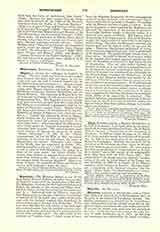

Mehrerau, formerly a Benedictine, now a Cistercian Abbey, is situated on Lake Constance, west of Bregenz, in the district of Vorarlberg, Austria. The original monastery was founded by St. Columbanus who, driven from Luxeuil, settled about 611 at this spot and built a monastery after the model of Luxeuil. A convent for women soon arose near the monastery for men. Little has been preserved of the early history of either foundation up to 1079. In this year the monastery was reformed by the monk Gottfried, sent by Abbot William of Hirsau, and the Benedictine rule was introduced. It is probable that when the reform was effected the convent for women was suppressed. In 1097-98 the abbey was rebuilt by Count Ulrich of Bregenz, its secular administrator and protector. During the twelfth and thirteenth centuries the abbey acquired much landed property; up to the middle of the sixteenth century it had the right of patronage for sixty-five parishes. In the era of the Reformation the abbey was a strong support of the old Faith in Vorarlberg. In particular Ulrich Motz, afterwards abbot, exerted much influence in Bregenzerwald (a mountainous district of northern Vorarlberg) by preaching with great energy against the spread of religious innovations while he was provost of Lingenau (1515-33). During the Thirty Years War the abbey suffered from the devastation wrought by the Swedes, from the quartering upon it of soldiers, and from forced contributions; it was also robbed of nearly all its revenues. Nevertheless, it often offered a free refuge to religious expelled from Germany and Switzerland. At a later date it was once more in a very flourishing condition; in 1738 the church was completely rebuilt, and in 1774-81 the monastic buildings were also entirely reconstructed. The existence of Mehrerau was threatened, as was that of other religious foundations, by the attacks upon monasteries in the reign of the Emperor Joseph II. However, Abbot Benedict was able to obtain the withdrawal of the decree of suppression, although it had already been signed. The Peace of Presburg (1805) gave Vorarlberg, and with it the abbey, to Bavaria, which in April, 1806, took an inventory of the abbey. In reply to the last attempt to save the abbey, namely the offer to turn it into a training-school for male teachers, the State declared in August, 1806, that on September 1 the monastic organization would be dissolved and the monks would have to leave the abbey. The valuable library was scattered, part of it was burnt. The forest and agricultural lands belonging to the monastery were taken by the State; in February, 1807, the church was closed, and the other buildings were sold at auction. In 1808-09 the church was taken down and the material used to build the harbor of Landau.
When the district came again under the rule of Austria, the monastic buildings were used for various purposes. In 1853 they were bought from the last owner, along with some pieces of land connected with them, by the abbot of the Cistercian Abbey of Wettingen in Switzerland (see Abbacy Nullius of Wettingen-Mehrerau). This monastery had been forcibly suppressed by the Canton of Aargau in 1841, and for thirteen years the abbot had been seeking a new home; on October 18, 1854, the Cistercian Abbey of Wettingen-Mehrerau was formally opened. In the same year a monastery school was started. In 1859 a new Romanesque church was built; its greatest ornament is the monument to Cardinal Hergenrother (d.1890), who is buried there. About the middle of the last century, during the fifties and sixties, the buildings were gradually enlarged. In 1910 besides the abbot (from 1902 Eugene Notz) the abbey had 32 priests; including those that had been connected with the abbey but were at that date engaged in work outside, 64 priests; in addition there were 5 clerics, 30 lay brothers, and 4 novices. The monastery has a house of studies, and a college, in which some 200 pupils are taught by the monks of the abbey. The periodical “Cistercienserchronik”, edited by Father Gregor Muller, has been issued since 1889.
JOSEPH LINS

